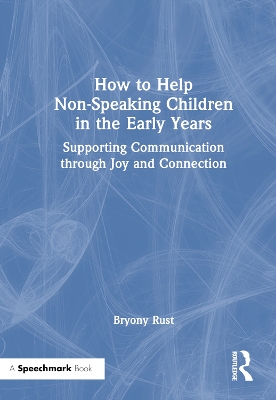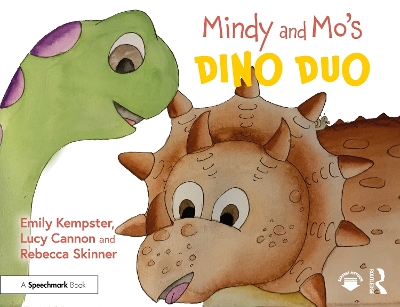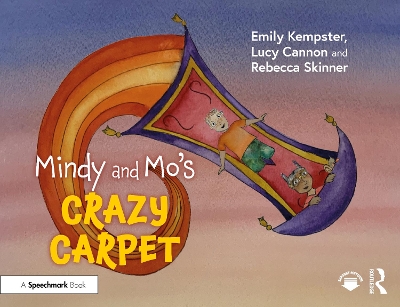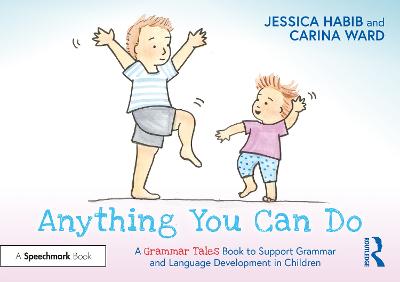How to Help Non-Speaking Children in the Early Years
 portes grátis
portes grátis
How to Help Non-Speaking Children in the Early Years
Supporting Communication through Joy and Connection
Rust, Bryony
Taylor & Francis Ltd
12/2024
120
Dura
9781032295176
15 a 20 dias
Descrição não disponível.
CHAPTER 1. What this guide is and how it can help you.
What we're aiming for (Help them learn it's worth the effort)
Stop doing, start noticing (this is the hardest part)
What to expect from this book
CHAPTER 2. Expand your definition of communication.
Speech, language and communication
Talking isn't everything
Always respond
Understand why we bother
Look out for opportunities
Understand what's going on behind the scenes
CHAPTER 3. Build relationships.
Include everyone from the beginning
Aim for a flat hierarchy
Practise active listening
Avoid fix-it mode
Stay out of judgement
Regulate to communicate
Realise our shared humanity
'Celebrate with me'
CHAPTER 4. Start from strength.
Tell a story of hope
Describe what the child can do
Shift your language from disorder to difference
Consider needs, not problems
Trust in capacity
CHAPTER 5. Let the child lead.
Tune in to the child's point of interest
Give it space
Look for the invitations
Directing vs. Responding
Give attention to get attention
Solutions for when it's hard:
Allow it to look like 'nothing'
Regulate to communicate
Allow the play to look unexpected
Avoid the toy trap
CHAPTER 6. Choose your focus.
Decide what's important
A note on mindfulness
Understand where the child's at
Write goals for the adults, not the child
Write SCRUFFY goals
CHAPTER 7. A strategies list
Allow yourself to do less
Embrace the awkward silence
Reflect the child
Pay attention to the details
Play with words
Use big gestures
Make your phrases sing
Use sound effects
Give, don't quiz
Make it easy
CHAPTER 8. Keep going.
Imagine something different
We're in the business of relationships
The simple version
Share with others
Choose one thing
Stick with it
Embrace everything
It's all in the noticing
Useful links
Bibliography
Index
What we're aiming for (Help them learn it's worth the effort)
Stop doing, start noticing (this is the hardest part)
What to expect from this book
CHAPTER 2. Expand your definition of communication.
Speech, language and communication
Talking isn't everything
Always respond
Understand why we bother
Look out for opportunities
Understand what's going on behind the scenes
CHAPTER 3. Build relationships.
Include everyone from the beginning
Aim for a flat hierarchy
Practise active listening
Avoid fix-it mode
Stay out of judgement
Regulate to communicate
Realise our shared humanity
'Celebrate with me'
CHAPTER 4. Start from strength.
Tell a story of hope
Describe what the child can do
Shift your language from disorder to difference
Consider needs, not problems
Trust in capacity
CHAPTER 5. Let the child lead.
Tune in to the child's point of interest
Give it space
Look for the invitations
Directing vs. Responding
Give attention to get attention
Solutions for when it's hard:
Allow it to look like 'nothing'
Regulate to communicate
Allow the play to look unexpected
Avoid the toy trap
CHAPTER 6. Choose your focus.
Decide what's important
A note on mindfulness
Understand where the child's at
Write goals for the adults, not the child
Write SCRUFFY goals
CHAPTER 7. A strategies list
Allow yourself to do less
Embrace the awkward silence
Reflect the child
Pay attention to the details
Play with words
Use big gestures
Make your phrases sing
Use sound effects
Give, don't quiz
Make it easy
CHAPTER 8. Keep going.
Imagine something different
We're in the business of relationships
The simple version
Share with others
Choose one thing
Stick with it
Embrace everything
It's all in the noticing
Useful links
Bibliography
Index
Este título pertence ao(s) assunto(s) indicados(s). Para ver outros títulos clique no assunto desejado.
Non-speaking;Children;connection;communication;Joy;Speech;Lanuage;Therapy;development
CHAPTER 1. What this guide is and how it can help you.
What we're aiming for (Help them learn it's worth the effort)
Stop doing, start noticing (this is the hardest part)
What to expect from this book
CHAPTER 2. Expand your definition of communication.
Speech, language and communication
Talking isn't everything
Always respond
Understand why we bother
Look out for opportunities
Understand what's going on behind the scenes
CHAPTER 3. Build relationships.
Include everyone from the beginning
Aim for a flat hierarchy
Practise active listening
Avoid fix-it mode
Stay out of judgement
Regulate to communicate
Realise our shared humanity
'Celebrate with me'
CHAPTER 4. Start from strength.
Tell a story of hope
Describe what the child can do
Shift your language from disorder to difference
Consider needs, not problems
Trust in capacity
CHAPTER 5. Let the child lead.
Tune in to the child's point of interest
Give it space
Look for the invitations
Directing vs. Responding
Give attention to get attention
Solutions for when it's hard:
Allow it to look like 'nothing'
Regulate to communicate
Allow the play to look unexpected
Avoid the toy trap
CHAPTER 6. Choose your focus.
Decide what's important
A note on mindfulness
Understand where the child's at
Write goals for the adults, not the child
Write SCRUFFY goals
CHAPTER 7. A strategies list
Allow yourself to do less
Embrace the awkward silence
Reflect the child
Pay attention to the details
Play with words
Use big gestures
Make your phrases sing
Use sound effects
Give, don't quiz
Make it easy
CHAPTER 8. Keep going.
Imagine something different
We're in the business of relationships
The simple version
Share with others
Choose one thing
Stick with it
Embrace everything
It's all in the noticing
Useful links
Bibliography
Index
What we're aiming for (Help them learn it's worth the effort)
Stop doing, start noticing (this is the hardest part)
What to expect from this book
CHAPTER 2. Expand your definition of communication.
Speech, language and communication
Talking isn't everything
Always respond
Understand why we bother
Look out for opportunities
Understand what's going on behind the scenes
CHAPTER 3. Build relationships.
Include everyone from the beginning
Aim for a flat hierarchy
Practise active listening
Avoid fix-it mode
Stay out of judgement
Regulate to communicate
Realise our shared humanity
'Celebrate with me'
CHAPTER 4. Start from strength.
Tell a story of hope
Describe what the child can do
Shift your language from disorder to difference
Consider needs, not problems
Trust in capacity
CHAPTER 5. Let the child lead.
Tune in to the child's point of interest
Give it space
Look for the invitations
Directing vs. Responding
Give attention to get attention
Solutions for when it's hard:
Allow it to look like 'nothing'
Regulate to communicate
Allow the play to look unexpected
Avoid the toy trap
CHAPTER 6. Choose your focus.
Decide what's important
A note on mindfulness
Understand where the child's at
Write goals for the adults, not the child
Write SCRUFFY goals
CHAPTER 7. A strategies list
Allow yourself to do less
Embrace the awkward silence
Reflect the child
Pay attention to the details
Play with words
Use big gestures
Make your phrases sing
Use sound effects
Give, don't quiz
Make it easy
CHAPTER 8. Keep going.
Imagine something different
We're in the business of relationships
The simple version
Share with others
Choose one thing
Stick with it
Embrace everything
It's all in the noticing
Useful links
Bibliography
Index
Este título pertence ao(s) assunto(s) indicados(s). Para ver outros títulos clique no assunto desejado.







